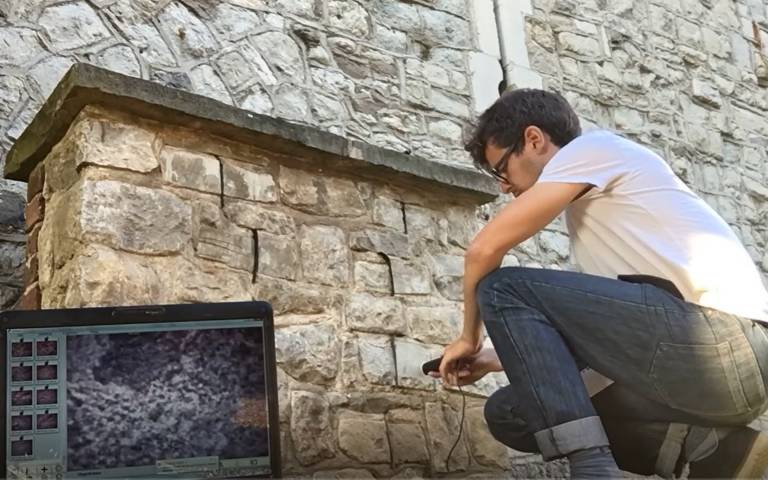Ongoing decay of stone at London landmarks due to mineralogy, past decay and environmental factors
14 January 2021
Martin Michette, SEAHA student, publishes research on the long-term success of Reigate stone conservation in the Tower of London and Hampton Court Palace

Reigate stone was used extensively in medieval London and is prone to rapid decay. While different conservation treatments have been applied to the stones in the past, in many cases these have not mitigated decay and in some cases treatments have even accelerated it.
Focusing on the Tower of London and Hampton Court Palace, two sites that used Reigate stone as the principal freestone, recent research published by SEAHA student Martin Michette explores these different conservation treatments. The study looks at stones treated with wax in the 1880s, lime method in the 1980s and 1990s, and Hydroxylating Conversion Treatment in a controlled-field experiment in 2001.
The research finds that wax treatment has accelerated delay in unsuitable environments, and while lime and hydroxylating conversion treatment are more benign this depends upon the mineralogical factors. As such, no single conservation method used to date gives long term protection to all the stones. This supports existing research showing that long-term consolidation is ineffective without regular maintenance.
Michette also found that stone mineralogy, past decay and present environmental factors are a greater influence to ongoing decay than treatment history.
Assessing the historic Reigate stone conservation in this way can inform on-going conservation strategies. Importantly, it suggests that ongoing conservation should be tailored to circumstances, mineral typologies and environments.
This research was conducted with support from Historic Royal Palaces.
Links
- Read Assessing the Long-term Success of Reigate Stone Conservation at Hampton Court Palace and the Tower of London in Studies in Conservation
- Martin Michette student profile
Image: Martin Michette using a usb microscope on a Reigate stone wall
 Close
Close

